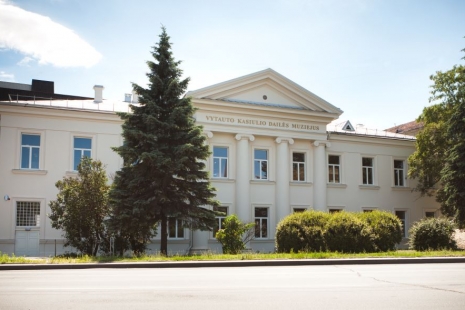N. Poškutė-Jukumienė’s latest jewelry installation “Prūšu mēlis/Prussian Blue” tells about the intersection of modernity and history, about the discrepancy between illusions and reality, about politics and sacredness. Prussian sand is a color that resulted from a mistake when the Swiss paint manufacturer Johann Jacob Diesbach, in the 18th century. initially working in Berlin, he tried to create red cochineal dyes. However, the reaction of blood, potassium and ferrous sulfate produced ferric ferrocyanide, which has a very bright blue tint. This first synthetic pigment was named Prussian blue or Berlin blue; the name has inspired poets, writers, it still sounds romantic, although there is nothing romantic here. Often people experience disappointment when they see the true Prussian blue color. N. Poškutė-Jukumienė in various Prussian blue enamels, the rhombuses, which form the main accents of the installation, are covered in shades of epoxy resin. It can be said that she sees the world through the shape of a diamond. It can be played with in many ways: a yellow-black blocking band is divided into diamonds, it symbolizes a diamond and a woman’s womb, it is used in traffic signs; it is like a module that can express many things in the same form. In this case, the chapel of the Palanga Amber Museum turns into one big rhombus, where a mosaic composed of rhombuses is repeated in various ways, as if in a sacred circle. Mosaics, usually used in churches, become signs of modernity here; looking at images in rhombuses covered with enamel, epoxy resin, we will see memes and other everyday inclusions. Memes, those visual fragments of our modernity, intended to briefly reflect and comically or ironically reflect what is happening and work for a very short time. At one time, everyone shares them, but after a few months, no one can even understand their meaning. However, these communication units retain bits and pieces of information flooding society at once. N. Poškutė-Jukumienė transfers memes to jewelry rhombuses, turning them into a part of the installation and encouraging the audience to recognize what was relevant, but has lost its meaning over time. Those rhombuses of Prussian sand are like a kind of time capsule; isn’t amber the same time capsule? Don’t we also romanticize blue amber, the rarest of all, not really glowing blue at all? Doesn’t the sand give a kind of romantic glow to the “blue earth”, where are the layers of amber and which is really just another shade of gray? We ourselves fill our environment with illusions and get disappointed when faced with reality. N. Poškutė-Jukumienė aims to dispel illusions and pull the audience out of stagnation, not only by provoking them to become participants in the installation. With one hand, she restores sacredness to the chapel, with the other, she takes on the role of the Pope, destroying stagnant religious beliefs. What is unacceptable is often just what deserves to become an art object. Uncomfortable, loud, critical, ironic art. In the end, not only the female pope becomes a meme, but all of us who walk in the installation, in that big rhombus. Like flies in a piece of blue amber. And in a way, that’s where we’ll stay forever.
Jurgita Ludavičienė





